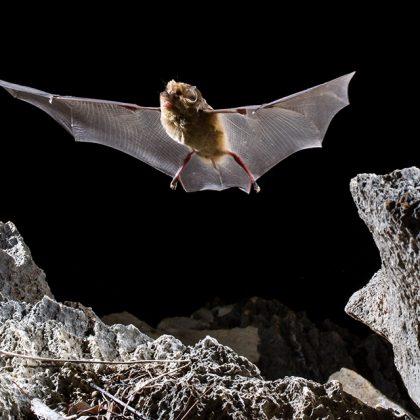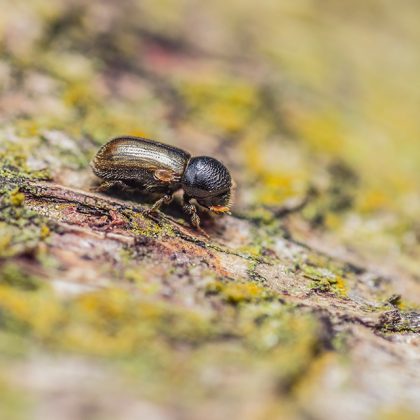Rare, Giant Hooded Tick-Spider Found in Illinois
Ricinuleids are cryptic, slow-moving arachnids that live under bark, in leaf litter, and in caves in tropical and subtropical areas of the world: Central and South America and West Africa. They have extremely thick cuticle which is covered in variously shaped tubercles, giving them a rather prehistoric appearance. They move slowly and feign death when prodded. Among their distinguishing features is a rectangular flap, the cucullus, which is hinged at the front of the body, protecting the chelicerae when moving through detritus, conferring on them the name of hooded tick-spiders.
Ricinuleids were known as fossils before living specimens were discovered. A fossil from an ironstone nodule collected in the early 19th Century at Coalbrookdale, Shropshire, England (the crucible of the Industrial Revolution) was described by William Buckland in 1837 as Curculioides ansticii. Buckland thought it was a weevil (Curculionidae), hence the generic name. It was not until the following year that the first living ricinuleid, Cryptostemma westermanni, was described from West Africa, as a harvestman. Eventually, the separate arachnid order Ricinulei was recognized at the start of the 20th Century. Living ricinuleids form a small group of just one family and three genera, but extinct forms exhibit greater diversity, with four families and six genera. They are now known from the Carboniferous coal measures of Europe and North America, and Cretaceous Burmese amber. The extinct forms inhabited tropical forests just like the living ones.
Curculioidids are known from the upper Carboniferous (Pennsylvanian) of North America and Europe, and can be recognised by a longitudinal fold on the dorsal abdomen; it is this feature which gives them a superficial resemblance to a beetle. Until now, the largest species of ricinuleid recorded was Curculioides gigas at 18 mm body length. We describe a new Curculioides species, from the Pennsylvanian of Illinois, from a locality not far from the famous Mazon Creek fossil sites which have yielded other ricinuleid species (e.g. C. gigas). The new species C. bohemondi is 21 mm in length. Both species dwarf even the largest known living ricinuleid which measures only 6 mm.
The fossil record is notoriously incomplete, a reputation that holds especially true for ricinuleids. This applies not only to their sporadic temporal occurrences, but also to the woefully incomplete preservation of individual specimens. Since the body shape and size of ricinuleids change fairly drastically from juvenile to adult, it can be difficult to determine if fragmentary fossil specimens represent new species or are simply members of known species at an as-yet unobserved life stage. We examined the tubercles covering the carapace (the anterior region of the body) of living ricinuleids to help understand this issue. Our study found that, although carapace length and tubercle size may change as a juvenile grows, the ratio between these two measurements remains equivalent across all ages and, most importantly, is unique to each species. This ratio represents an important new tool to help identify both fossil and living ricinuleids of unknown species identity.
“A new, giant ricinuleid (Arachnida, Ricinulei), from the Pennsylvanian of Illinois, and the identification of a new, ontogenetically stable, diagnostic character” by Niall Whalen and Paul Selden has been published in Journal of Paleontology, published by Cambridge University Press on behalf of the Paleontological Society. The article has been made freely available for a limited time.
Read other blog posts from Journal of Paleontology here
or view all blog posts from the Paleontological Society Journals





